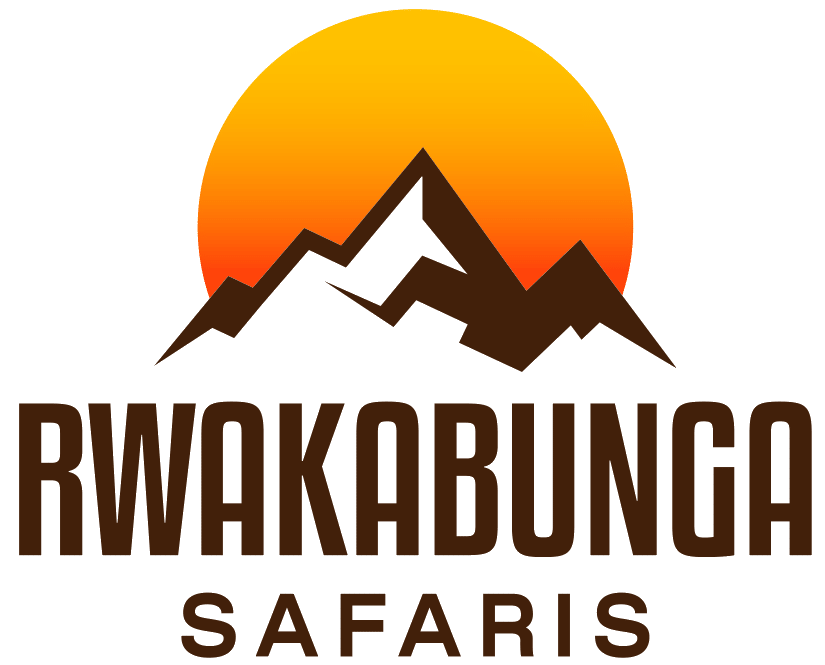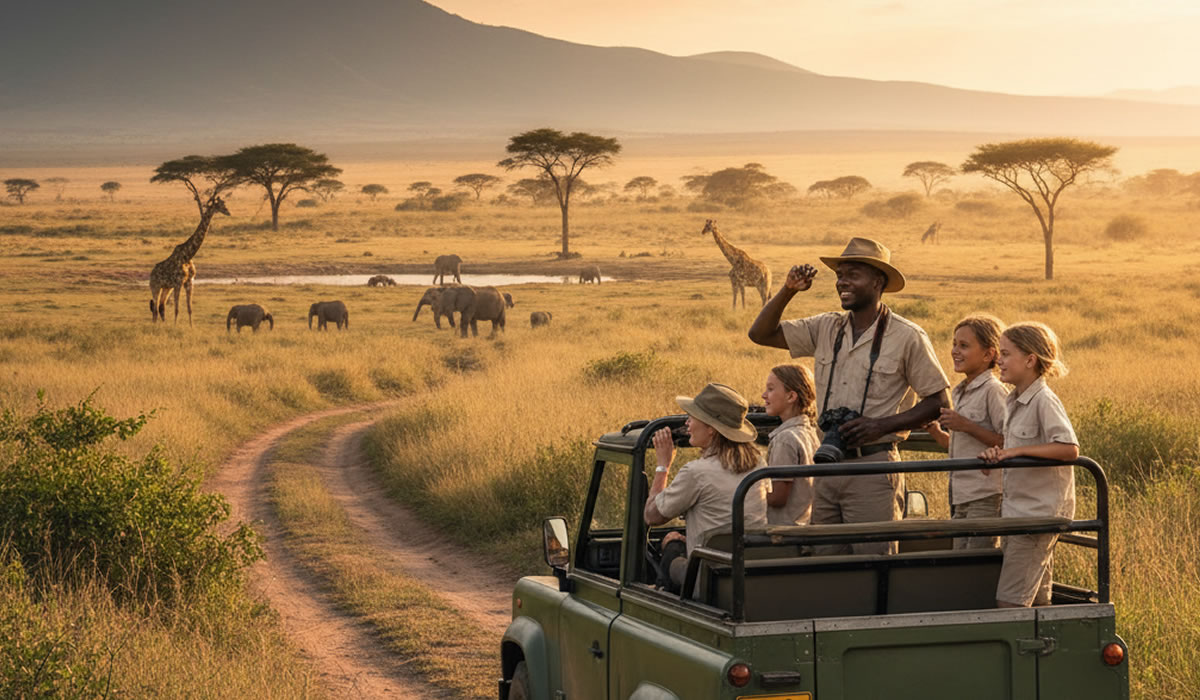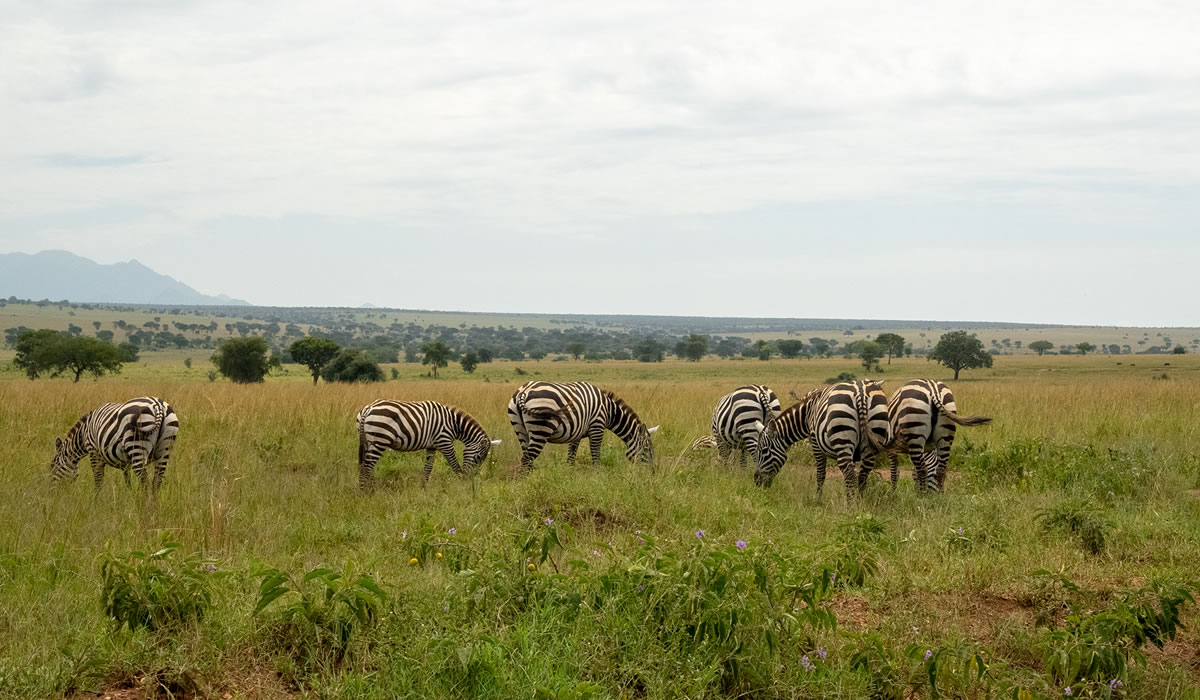Uganda, famously known as the Pearl of Africa, is a vibrant destination offering rich wildlife,…

Hiking the Rwenzori Mountains in Uganda
The Rwenzori Mountains, often referred to as the “Mountains of the Moon,” are among Africa’s most striking natural wonders. Located along Uganda’s western border with the Democratic Republic of Congo, this UNESCO World Heritage Site is a haven for hikers, nature lovers, and adventure seekers. Rising to 5,109 meters at Mount Stanley’s Margherita Peak, the Rwenzoris are Africa’s third-highest mountain range, after Kilimanjaro and Mount Kenya. Hiking the Rwenzori Mountains in Uganda offers tourists a unique and challenging experience through some of the most dramatic landscapes on the continent, combining snow-capped peaks, lush forests, glacial lakes, and alpine meadows.
The Location and Geography of the Rwenzori Mountains
The Rwenzori Mountains are situated in western Uganda, stretching along the border between Uganda and the Democratic Republic of Congo. The range runs for about 120 kilometers, covering an area of nearly 996 square kilometers within the Rwenzori Mountains National Park. This park is known for its spectacular scenery, diverse ecosystems, and unique flora and fauna found nowhere else in the world.
Unlike volcanic mountains such as Kilimanjaro, the Rwenzoris were formed by tectonic movements, which created a rugged landscape of peaks, valleys, and glaciers. The highest peaks—Mount Stanley, Mount Speke, and Mount Baker tower above the clouds and are often shrouded in mist, giving the range its mystical allure. The lower slopes are covered in dense tropical rainforest, while higher elevations transition into bamboo forests, heather zones, and alpine meadows adorned with giant lobelias and groundsels. This diversity makes hiking in the Rwenzori Mountains a breathtaking experience for both adventure and nature enthusiasts.
The Rwenzori Mountains National Park
Rwenzori Mountains National Park is one of Uganda’s most captivating destinations. The park is managed by the Uganda Wildlife Authority and was designated a UNESCO World Heritage Site in 1994 due to its exceptional natural beauty and ecological significance. The park is home to 70 species of mammals, 217 bird species, and several endangered plants.
Tourists visiting the park can expect pristine wilderness, clean air, and a true sense of adventure. Because the Rwenzoris are less frequented than other African peaks, hiking here feels like an intimate exploration of untouched nature. The park is also important for its cultural value, as it borders communities of the Bakonzo people who have lived near the mountains for centuries and consider them sacred.
Popular Hiking Routes in the Rwenzori Mountains
The Rwenzori Mountains offer multiple trekking routes catering to different fitness levels and interests. The two main routes are the Central Circuit Trail and the Kilembe Trail, both offering immersive multi-day hikes that reveal the mountains’ diverse ecosystems and breathtaking scenery.
The Central Circuit Trail
The Central Circuit Trail is the most established route, managed by the Rwenzori Mountaineering Services (RMS). This 7 to 9-day trek begins at the Nyakalengija gate, near Kasese town, and loops through valleys, rivers, and high-altitude zones before returning to the starting point. Along the way, tourists pass through several camps such as Nyabitaba, John Matte, Bujuku, and Elena.
The trail offers an opportunity to reach Margherita Peak, the highest point on Mount Stanley, which requires technical climbing skills and ice equipment. Hikers experience dramatic landscapes including the Bujuku Valley, glacial lakes, and towering ridges. The route’s combination of physical challenge and natural beauty makes it ideal for serious adventurers.
The Kilembe Trail
The Kilembe Trail, managed by Rwenzori Trekking Services (RTS), begins at Kilembe, southwest of Kasese. It is relatively newer and offers routes that vary from 3 to 9 days depending on the destination. This trail ascends through the Nyamwamba Valley, passing beautiful waterfalls, moss-covered trees, and alpine meadows before reaching high-altitude camps like Mutinda, Bugata, and Butawu.
The Kilembe Trail provides stunning panoramic views and also offers access to Margherita Peak. For those who prefer shorter hikes, RTS offers one-day or two-day treks to lower altitudes, giving tourists a chance to enjoy the mountains without committing to a full expedition.
What to Expect on a Rwenzori Hiking Adventure
Hiking the Rwenzori Mountains is a demanding yet rewarding experience. The terrain is rugged, with steep climbs, muddy paths, and unpredictable weather. However, every challenge is matched by incredible beauty and tranquility. Tourists often describe the trek as walking through a natural masterpiece painted with mist, moss, and waterfalls.
Daily hikes can last between 5 and 8 hours, depending on the altitude and pace. The trails traverse various vegetation zones, starting from tropical forests teeming with monkeys and birds, up through bamboo thickets and giant heather zones, to alpine meadows where giant lobelias stand tall like sculptures. As you climb higher, temperatures drop, and snow-capped peaks become visible.
Camping huts are located along the routes, providing shelter, basic beds, and cooking areas. Porters are available to carry heavy gear, while guides ensure safety and navigation. Reaching Margherita Peak is the ultimate goal for many hikers. The final ascent involves crossing glaciers and using ropes, crampons, and ice axes. Though challenging, the view from the summit is unforgettable, stretching across Uganda, Congo, and the shimmering snowfields below.
Best Time to Hike the Rwenzori Mountains
The best time to go hiking in the Rwenzori Mountains is during the dry seasons, from June to August and December to February. During these months, trails are drier, and visibility is better, reducing the difficulty of navigating through mud and slippery terrain.
The wet seasons, from March to May and September to November, bring heavier rainfall, making the trails more challenging. However, the lush vegetation and vibrant scenery during these months attract photographers and nature enthusiasts who enjoy a greener, mistier landscape. Regardless of the season, temperatures in the Rwenzoris can drop significantly at higher altitudes, so tourists should always prepare for cold and wet conditions.
Preparation and Equipment
Because the Rwenzori Mountains are known for their unpredictable weather and challenging terrain, proper preparation is crucial. Tourists should be physically fit and ready for long days of hiking at high altitudes. Essential gear includes waterproof hiking boots, warm clothing, a rain jacket, gloves, a hat, gaiters, a sleeping bag, and trekking poles.
Climbers aiming for Margherita Peak must have technical equipment such as crampons, harnesses, and ropes, which can be rented from local mountaineering services. It is also advisable to carry energy snacks, a headlamp, and a first-aid kit. Hiring professional guides and porters not only ensures safety but also supports the local community, as most porters and guides come from nearby villages.
Flora, Fauna, and Unique Landscapes
One of the most remarkable aspects of hiking the Rwenzori Mountains is the extraordinary biodiversity. The mountain slopes feature distinct vegetation zones that change with altitude. The lower slopes are dominated by tropical rainforests filled with monkeys, chameleons, and birds such as Rwenzori turacos and sunbirds. Higher up, bamboo forests and heather zones give way to alpine vegetation, where giant groundsels and lobelias create a surreal and prehistoric atmosphere.
Wildlife sightings add to the adventure. Tourists may encounter forest elephants, hyraxes, and small antelopes, although most animals remain elusive due to the dense vegetation. The Rwenzori Mountains are also a birdwatcher’s paradise, with endemic species like the Rwenzori batis and the golden-winged sunbird. The combination of unique flora, fauna, and breathtaking landscapes makes this one of the most beautiful mountain ecosystems in Africa.
Cultural Encounters
The communities surrounding the Rwenzori Mountains are mainly inhabited by the Bakonzo people, known for their hospitality and deep cultural connection to the mountains. The Bakonzo believe that the Rwenzoris are the home of their gods and ancestral spirits. Many hiking tours include cultural encounters where tourists can visit local villages, learn traditional dances, and witness daily life in the foothills.
Community tourism initiatives also allow visitors to explore banana farms, coffee plantations, and craft workshops. These cultural experiences enrich the hiking adventure by giving tourists a deeper understanding of local traditions and the importance of the mountains to the region’s heritage.
Conservation and Sustainable Tourism
Rwenzori Mountains National Park plays a vital role in conserving fragile mountain ecosystems. The Uganda Wildlife Authority, in partnership with local communities and international organizations, works to protect the park’s biodiversity and promote sustainable tourism.
Tourists are encouraged to practice responsible hiking by minimizing litter, staying on designated trails, and respecting wildlife and local customs. Entrance fees and trekking permits contribute to park maintenance and community development, ensuring that tourism benefits local people and helps preserve this unique environment for future generations.
Accommodation Options
Accommodation for tourists hiking the Rwenzori Mountains ranges from budget lodges in Kasese and Kilembe to mountain huts along the trekking routes. In Kasese town, popular choices include Sandton Hotel and Rwenzori International Hotel. At the park’s entrance, lodges like Ruboni Community Camp and Equator Snow Lodge provide comfortable stays with scenic views of the mountains.
During multi-day hikes, trekkers sleep in designated huts managed by either Rwenzori Mountaineering Services or Rwenzori Trekking Services. These huts are strategically located along the trails and equipped with bunks, cooking facilities, and water sources. The accommodation may be basic, but it adds to the authenticity of the wilderness experience.
Hiking the Rwenzori Mountains in Uganda is an adventure unlike any other in Africa. The combination of snow-capped peaks, pristine forests, glacial lakes, and cultural richness creates a journey that is both physically demanding and spiritually rewarding. Whether you aim to conquer Margherita Peak or simply explore the mountain foothills, the Rwenzoris promise unforgettable memories.
For tourists seeking a unique hiking destination filled with natural beauty, biodiversity, and cultural depth, the Rwenzori Mountains stand out as one of Uganda’s finest treasures. Every step through these misty highlands tells a story of nature’s power and timeless wonder, making the Rwenzoris a must-visit destination for anyone passionate about adventure and discovery in the Pearl of Africa.




